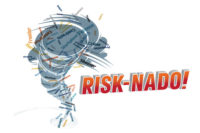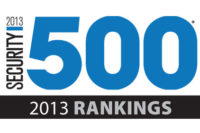Patrick Murphy: Securing a World of Opportunity
“It is important for CEOs to understand that the safety and security departments provide an important role in protecting the brand reputation.”

“Leadership is bestdone by leading by example and through respect for others,” says Patrick Murphy, Senior Director, Global Safety and Security Services for Marriott International Inc.
The black belt martial arts professional turned CSO has set the example for leadership during his outstanding career. “After martial arts, I asked myself, ‘Now what?’ I saw an advertisement for an executive protection academy. One thing led to another, and before I knew it I was a bodyguard for the Chairman and President of what was at first a small, fast-growing company.”
In five years that company reached the Fortune 500 with more than 750 worldwide locations and reorganized to reflect their growth. Part of the reorganization was recognizing the need for enterprise security. Pat was named the new department’s first security director.
“It was an amazing opportunity to learn and craft my professional security and business skills,” he says. “However, I traveled too much, and I wanted to find something that involved less travel. Oddly, all that travel paid off when the opportunity to become the New Orleans Marriott director of loss prevention emerged. All that travel helped me understand the hotel guest and their view of security.”
Pat’s next move was to Houston as the director of human resources at the Houston Marriott. That experience gave him an in-depth understanding of the hospitality business. In 1994, Marriott International Inc offered him a spot in the Internal Investigations department, and in 1997 he was promoted to his current position, where his team provides security services to more than 1,000 Marriott managed hotels worldwide.
“My team oversees and maintains the global safety and security standards and guidelines. We also work with the other disciplines (e.g., food and beverage, rooms operations, maintenance) in our various brands to provide consistency across the brands pertaining to reasonable safety and security measures.
The process of designing a hotel with risk and security top of mind is fascinating and complex. “When an owner agrees to build a hotel the company provides an architecture design standards book with design modules on each aspect of the hotel operations,” he explains. “Pertaining to hotels that will be managed by Marriott, the Technical Services team will review and comment on the design of the hotel as it goes through the various design stages. Our goal is to provide reasonable guest and employee safety and security and contribute to the business by reducing claims, lawsuits, insurance and medical expenses.”
“Marriott has a great culture,” he adds. “Mr. Marriott senior’s motto was ‘Take care of the associate who will take care of the guest, and the guest will keep coming back.’ One of our guest satisfaction survey questions asks the guest to rate, ‘Feeling of Secure/Safe Environment.’ It is one of the highest rated questions on the survey.”
Globalization is an opportunity and a challenge for Pat. Developers are seeking to build hotels in some high-risk areas such as Afghanistan and Iraq. “We have risk assessments and discuss the threats in great detail,” he explains. “The planning includes identifying the vulnerabilities and providing reasonable mitigation measures to deter the threats. We have to not only be prepared to evacuate people, but there may also be times we need to shelter-in-place and secure the hotel with the guests inside. Of course, it is important to have contingency plans to evacuate persons from the city or even country as we had accomplished during hurricanes Katrina in New Orleans and Wilma in Cancun.”
One of the metrics that Marriott Risk Management focuses on is loss rate. “Loss rate is measured as total losses in dollars divided by total sales revenue,” Pat says. “This is based on the premise that the more sales a hotel generates the more guests are in the hotel and more employees are working to service the guests, thus more exposure to general liability and workers compensation claims for the hotel. This creates a baseline for year-to-year performance at each property. In addition, these metrics can be used to point to the problem spots where we can make an impact and reduce loss.”
“It is important for CEOs to understand that the safety and security departments provide an important role in protecting the brand reputation,” Pat notes. “As we have seen in many cases it only takes one serious incident to give a brand a black eye, leading to losses of millions of dollars in sales because people do not want to frequent that brand any longer. No one can prevent crime and injuries, but it is important to provide reasonable care to mitigate the chances of serious incidents from occurring.”
“When I met my wife she kept urging me to get into IT security, which is her profession,” Pat says. “But in my mind, making decisions that may save someone’s hard drive just isn’t the same as making decisions that may save someone from harm or perhaps even saving their life. We have thousands upon thousands of people enter our hotels daily, and most do so injury and incident free. That in itself is why I enjoy the physical security profession.”
When he is not working, Pat still enjoys the martial arts, golf and time with his family.
Security Scorecard
- Annual Revenue: $118 Billion
- Security Budget: $78 Million
Critical Issues
- Civil Unrest
- Natural Disasters
- Terrorism
Security Mission
- Brand/Product
- Corporate
- Enterprise Resilience
- Enterprise Risk Management
- Intellectual Property
- Physical/Asset Protection (Not for Resale)
- Regulatory Compliance
- Workforce Protection
Looking for a reprint of this article?
From high-res PDFs to custom plaques, order your copy today!







